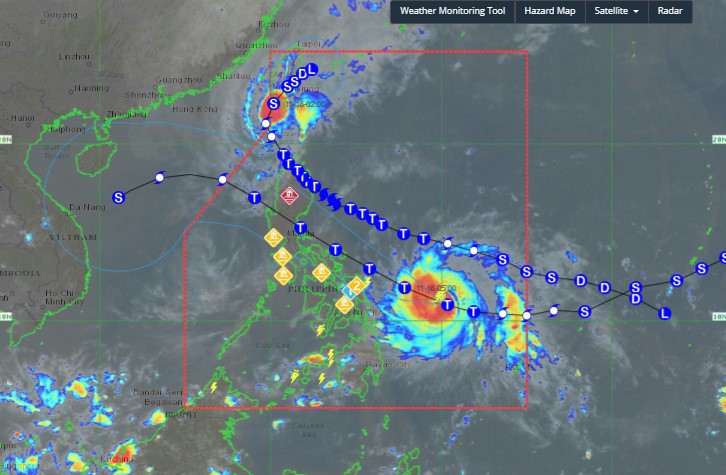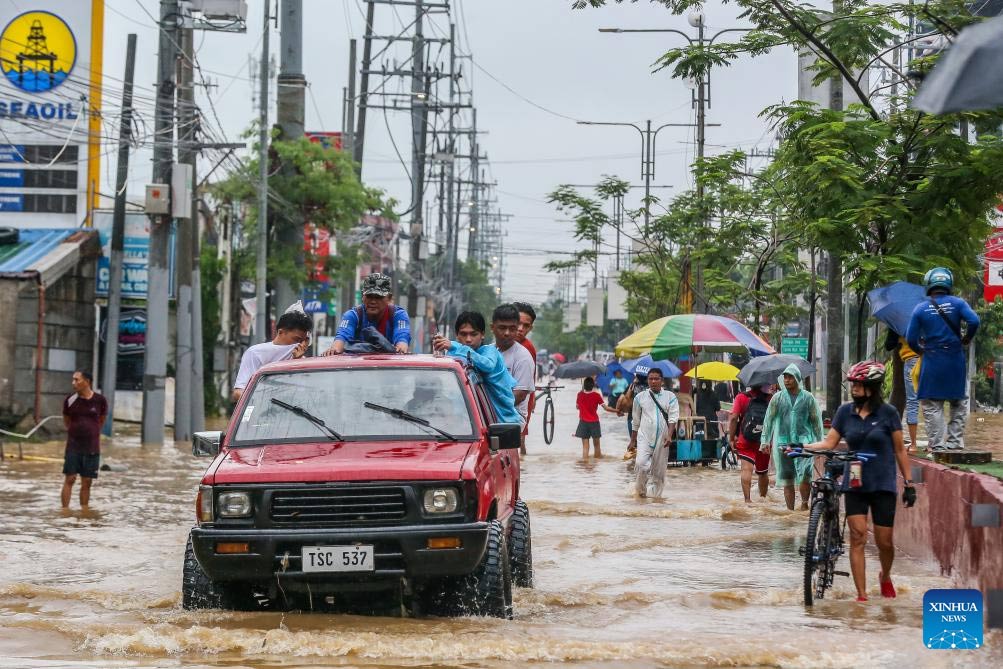According to the latest storm information from the Philippine Atmospheric, Geophysical and Astronomical Services Administration (PAGASA), at 11:00 a.m. on November 14 (local time), the center of storm Man-yi was located at approximately 11.1 degrees North latitude - 130.0 degrees East longitude, 465 km east of Guiuan, Eastern Samar.
The storm is moving west-northwest at a fast speed of about 30 km/h. The strongest wind near the storm's center is maintained at 150 km/h, with gusts of up to 185 km/h.

Typhoon Man-yi is expected to move mainly west-northwest over the next five days. It is forecast to make landfall in the vicinity of Catanduanes on the evening of November 16 or early morning of November 17.
The second scenario is for the typhoon to make landfall on the east coast of Camarines Sur, Albay or Sorsogon within the same time frame, in the afternoon or evening of November 16.
The third scenario is for the typhoon to make landfall on the eastern coast of Northern Samar, or along the eastern coast of Quezon or Aurora in the afternoon or evening of November 17.
Regardless of the landfall point, PAGASA forecasts that Typhoon Man-yi is likely to move west-northwestward over the weekend and pass over or near the mainland of Bicol Region, Quezon, Central Luzon and Pangasinan provinces before entering the West Philippine Sea by the evening of November 17 or morning of November 18.
PAGASA stressed that heavy rains, strong winds and storm surges are still possible in localities outside the landfall point and the forecast confidence range. In addition, the path of Typhoon Man-yi may still shift.
Typhoon Man-yi will continue to rapidly intensify on November 15 to November 16 and may reach super typhoon status before making landfall on November 16 or early November 17.
Although the storm may weaken slightly after crossing land, this is expected to happen on November 17 when Man-yi crosses the mainland of Central Luzon. However, the storm will still pass over land as a typhoon. Man-yi is likely to weaken into a strong tropical storm as it moves into the South China Sea on November 18.
Tourists planning to visit the Philippines during this time should pay attention to weather forecasts, check flight schedules to ensure safety, and proactively plan their trip. The typhoon season in the Philippines usually focuses on September to October, but typhoons can still form as late as November and December.







